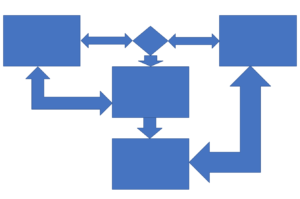The Effect of Universal Design for Learning (UDL) Application on E-learning Acceptance: A Structural Equation Model
 Standardising learning content and teaching approaches is not considered to be the best practice in contemporary education. This approach does not differentiate learners based on their individual abilities and preferences. The present research integrates a pedagogical theory Universal Design for Learning (UDL) with an information system (IS) theory Technology Acceptance Model (TAM). It aims to examine the effectiveness of a technology-enhanced traditional web design course on blended e-learning acceptance and learner satisfaction in which UDL principles (multiple means of representation, action and expression, and engagement) were implemented. This casts some light on the role of addressing curricula limitations on learner perceptions and e-learning adoption. A mixed research design combining survey and action methods was followed. Overall, 92 undergraduate students took part in the study. The research instrument was validated first. Subsequently, partial least squares-structural equation modelling (PLS-SEM) was applied to identify the path associated among constructs used in the proposed framework. The extended model accounted for 45.4% and 41.6% of the variance of perceived satisfaction and behavioural intention respectively. The findings suggest that using educational technologies to address curricula limitations is a bridge to enhancing learner willingness to accept e-learning.
Standardising learning content and teaching approaches is not considered to be the best practice in contemporary education. This approach does not differentiate learners based on their individual abilities and preferences. The present research integrates a pedagogical theory Universal Design for Learning (UDL) with an information system (IS) theory Technology Acceptance Model (TAM). It aims to examine the effectiveness of a technology-enhanced traditional web design course on blended e-learning acceptance and learner satisfaction in which UDL principles (multiple means of representation, action and expression, and engagement) were implemented. This casts some light on the role of addressing curricula limitations on learner perceptions and e-learning adoption. A mixed research design combining survey and action methods was followed. Overall, 92 undergraduate students took part in the study. The research instrument was validated first. Subsequently, partial least squares-structural equation modelling (PLS-SEM) was applied to identify the path associated among constructs used in the proposed framework. The extended model accounted for 45.4% and 41.6% of the variance of perceived satisfaction and behavioural intention respectively. The findings suggest that using educational technologies to address curricula limitations is a bridge to enhancing learner willingness to accept e-learning.
International Review Research in Open and Distributed Learning







